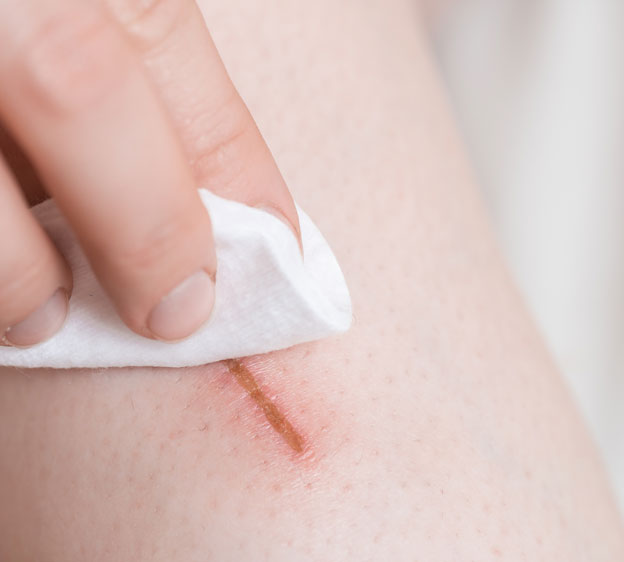
A cut is distressing no matter its size, but once you get past the initial shock, it’s important to focus on hygiene and healing. The first step is determining what kind of care you need. Cuts fall into two broad categories: those that are treatable at home and those that need a health care provider’s attention in an urgent care clinic or emergency room. Wounds that fall into the latter group may require stitches. Let’s take a closer look at minor vs. major cuts and the most appropriate level of care for both.
You’ve Got This: Caring for Minor Cuts at Home
Not every cut warrants a visit with a health care provider. Typically, if a cut is small and shallow — less than three-fourths of an inch long and less than one-fourth of an inch deep, according to the American Academy of Dermatology — first aid at home is all you need.
“Preventing infection is key, and that starts with having clean hands,” says James Varner, MMS, PA-C, board-certified physician assistant with Lowcountry Medical Group Primary Care. “Wash your hands thoroughly, and then gently clean the cut with cool water and a mild soap. Firmly press a clean washcloth or gauze on the cut until the bleeding stops.”
Moisture aids healing, so once the cut is no longer bleeding, apply an antibacterial ointment or petroleum jelly and cover with a bandage. Change the bandage at least once every day until the wound heals. If your cut came from an animal bite or a dirty object, such as a rusty nail, ask your primary care provider if you should get a tetanus shot.
Read More: Freak Out or Chill Out: Everyday Scrapes and Bruises
When a Cut Needs Stitches
Wide, deep cuts need medical attention and, possibly, stitches, based on a health care provider’s determination. Stitches may be necessary if a cut:
- Contains a foreign object or debris
- Is on your face
- Reveals soft tissue or bone
- Spurts blood
- Won’t stop bleeding after you’ve applied pressure for several minutes
“Urgent care clinics can treat many types of cuts, but if a wound is spurting blood, which could indicate an artery has been damaged, or bleeding uncontrollably, it’s a medical emergency, and you should call 911,” Varner says. “While waiting for help, wash your hands, clean the wound, elevate the injured body part and apply pressure to the cut with a bandage or cloth.”
Watch Your Wound
If you get stitches, your health care provider will tell you how long they need to remain in place, based on the severity of the cut and where it’s located. In the meantime, keep an eye on the cut for signs of infection, including:
- Fever
- Intense redness (mild redness is OK)
- Pus
- Swelling
- Warmth
Contact your health care provider if you notice any of those signs or if the stitches loosen or the wound reopens.
Looking for a primary care provider? Find a provider accepting new patients.
Updated: April 2025

